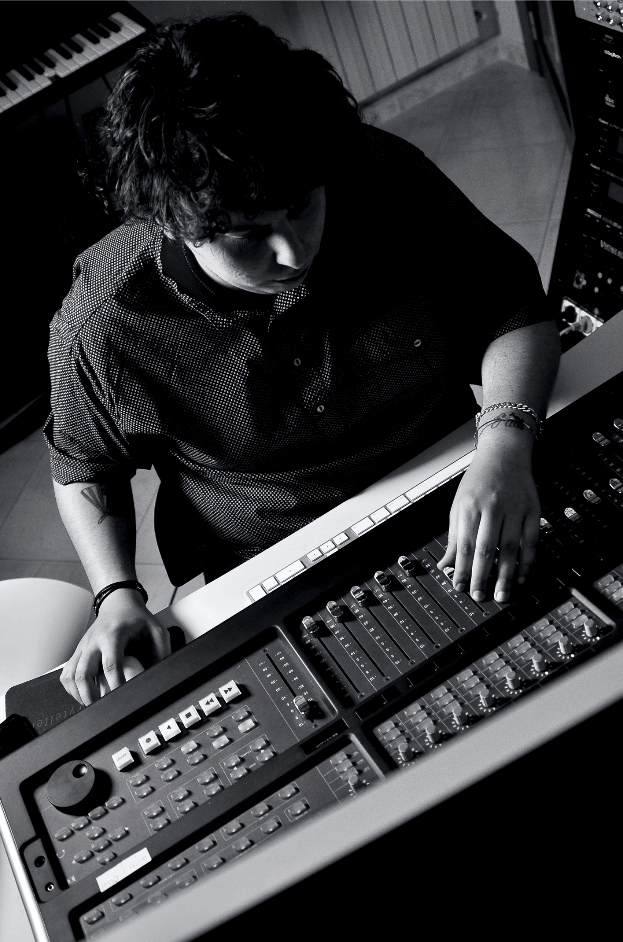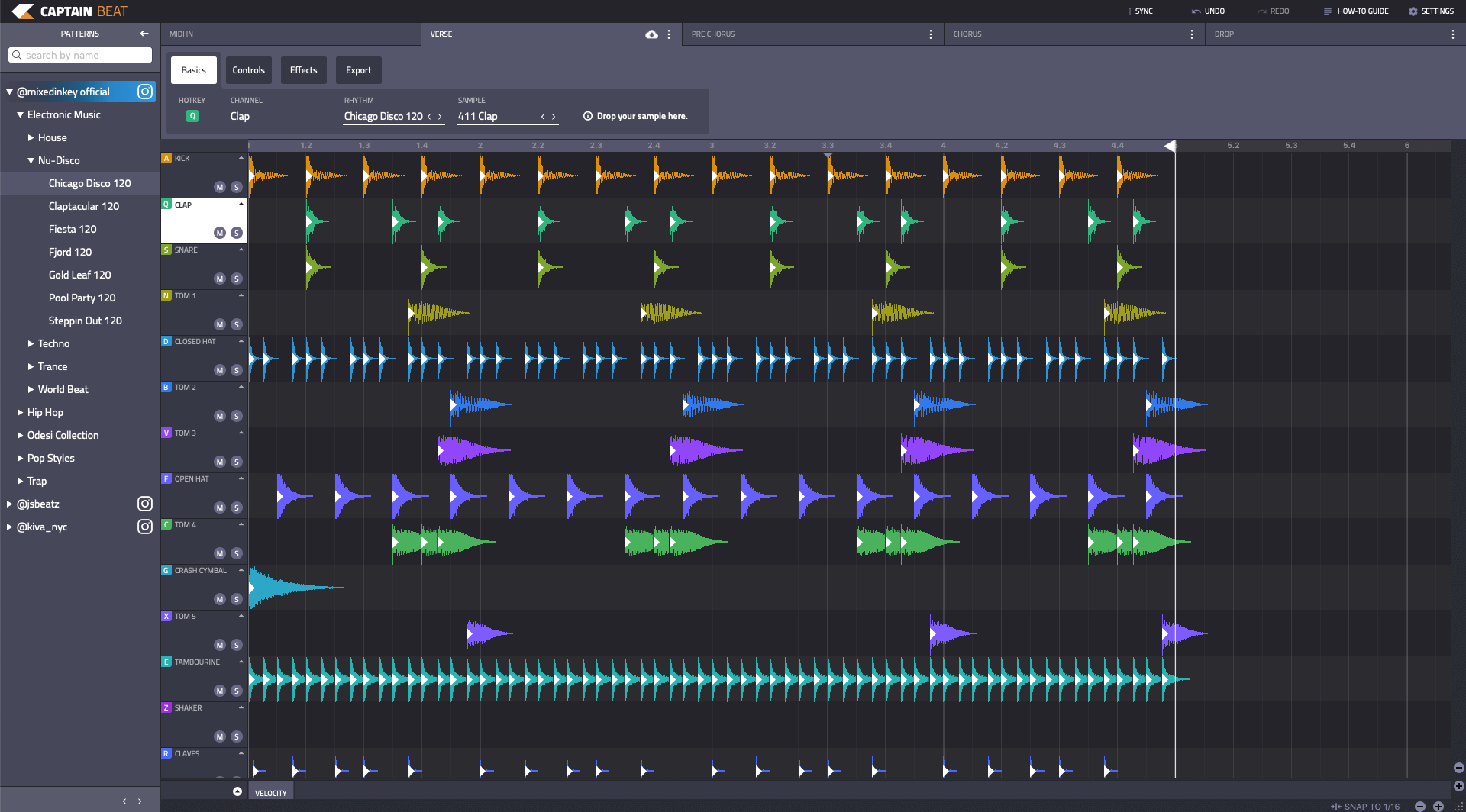How to arrange a track in any genre.

Arrangement is a commonly overlooked and vitally important aspect of any track. If the arrangement isn’t fit for purpose, energy drains from the song, the pace of progression doesn’t match the music, or it simply doesn’t sound right. The arrangement is the framework by which your audience understands the intention and purpose of the track. Fail to arrange your track appropriately, and it won’t matter how good the music is.
What is arrangement?
Arranging a track is fundamentally a simple process. It’s taking the sections of song you’ve written, and laying them down so they make sense from start to finish. The arrangement is the journey of your track. It’s the relationship between where it starts, how it develops its dramatic ideas, how it flows through sections, and how it resolves again. Ultimately, a good arrangement should feel right when you play it through.
There are other, more practical considerations to weigh up, too. Let’s take a look at some of those, before we move on to precise guidance on arranging a track in any genre…
Write Chords Faster with Captain Chords
- Use Captain Plugins to write your own Chord Progressions, Hooks, Melodies and Basslines
- Export to your DAW
- Available on Mac and Windows.
Know your audience. Know which platform they use.
Sometimes you write a song without an audience in mind. Other times you know exactly who you’re trying to reach, and how the song should sound to reach them. Both are totally valid approaches, and you’ll probably find you oscillate between the two during your career. But, once the song is written, you must consider who your audience is in order to arrange a track effectively. It cannot be overstated. Here are some common audience types:
- Nightclub DJ.
- Mainstream Radio DJ/Radio Producer.
- Niche Radio DJ/Radio Producer.
- Open Format DJ.
- Casual Radio Listener.
- Spotify/Youtube shuffler.
Radio ready?
You might think that so long as the arrangement of your track sounds pretty good to you, that it will be appropriate for all these audiences in equal measure. But you’d be mistaken.
A mainstream Radio DJ or Producer is only going to consider songs that announce themselves emphatically, hit the sweet spot quickly and finish up promptly. They have lots of songs to fit into their playlists, and often some commercial obligations to larger record labels. To be in with a shot, your track needs to be on point from the first note. Likewise, a casual radio listener will tune out if a song doesn’t capture their interest quickly.
The Spotify Shuffler.
Many listeners enjoy working their way through the labyrinth of playlist recommendations on Spotify (other streaming services are available). But did you know? They spend an average of just twenty seconds listening to a song before deciding whether to skip or stick. That’s a mind-blowingly short time in which to captivate your listener.
Many modern pop artists like Taylor Swift and Ariana Grande have taken that as a signal to adapt. The intro section of many new songs is a matter of mere seconds before the chorus drops. It’s an attempt to grab those floating listeners and keep them interested.
Here’s a perfect example:
Ariana Grande & Nicki Minaj’s smash hit Side to Side doesn’t mess about. The arrangement begins with a slightly toned down version of the chorus, meaning listener’s are instantly presented with the catchiest melody of the song.
Cater to the DJ
Conversely, arranging tracks for DJs requires different considerations. Open Format or Hip-Hop DJs generally need a chunk of intro to beat-match the outgoing track with. It shouldn’t be too short, but it shouldn’t be too long, either. Just enought to make mixing straighforward. But where should it go after that? It’s a little genre-dependent, but if it’s music for DJs it’s for parties, and that probably means a bold opening gambit. Usually that’s a banging hook straight after the intro.
Alternatively, you might want to throw in a curveball. What about going straight into a breakdown? This can make your track a useful weapon for the DJ – they can build up the tension in their mix and then surprise everyone as your track’s intro builds into an expected hook. By suddenly pulling down into a breakdown, you might create a ‘hands in the air’ moment. Then, when it builds up to the drop, everyone will go crazy. It’s not a bad plan, anyway. Better make sure the track has a big enough pay off!
Lil Wayne’s Family Feud Ft Drake has a traditional Hip-Hop intro with a twist. There’s the formulaic 8 bar intro section. While there’s no beat, it’s rhythmic enough for DJs to mix. Then, we get the rap verse on the 9th bar. All as expected. But what’s interesting is the producer, Guru, holds off the drums for another 4 bars. This is an interesting way of playing with expectations and adding a little surprise.
Club-friendly.
And what about Nightclub DJs? These cats are generally there to play one or two genres maximum, and people are there to enjoy their mixing as much as the music. They want tracks with extended intros and outros so they can tease in new tracks for several minutes at a time. It’s a totally different skill to open format DJing, and requires a different approach. Arrange a track that begs to be mixed and nightclub DJs will go wild for it!
Find the primary audience.
Of course, your particular audience may be a combination of these audience types. You might make Tech House, for example, and find that there is a passionate army of Tech House consumers on Spotify. But, they’re expecting to hear the same music they would in a club, so the primary audience type is still Nightclub DJ. Similarly, pop or rock artists might have their music played by open format DJs, but the primary audience is still radio and streaming. If a song is popular enough, DJs will find a way to make it fit!

Cut to the chase.
Even in 8 or 9 minute Deep House odysseys, it’s important not to waste space. Even more so for pop, rock and other, shorter form music. It is a competitive playing field, and attention spans are short. Any fat in your arrangement needs to be trimmed with extreme prejudice. Listen carefully and critically to your song and its arrangement.
Are there any bits where you start to lose interest? Does it flow smoothly between parts? Do the builds in tension resolve themselves at a satisfying point?
Cut anything that doesn’t serve a clear purpose. This can be said or the composition itself, and also the arrangement. If your intro is 16 bars long, it needs to satisfy the needs of your target audience. If it doesn’t, cut it to 8, or even 4.
It can be tricky to determine what the song needs when you’ve heard it a certain way during the writing process. Take a brea and come back to it, or unplug your studio monitors and listen on laptop speakers. A refreshing shift in focus can reveal more truth about your track than you might imagine.
Once you’ve satisfied yourself that every section of your track is serving a clear and desirable purpose, you’re one step closer to a beautifully arranged track.
Listen to the song’s journey.
As we’ve discussed already, arrangement is the song’s journey. Its story. This is a symbiotic relationship between the function of the song and the dramatic quality of the composition. In short, the relationship between how the song feels, and what the song is for.
Marrying those two concepts is key to arranging a great track. We want to ensure our track fulfils its brief – ie satisfying its audience type and platform demands. It also needs to work to the music’s advantage. Achieving that is a case of listening to your track and hearing where it wants to take the listener.
You may have already got a clear idea of this from the composition phase. Or, you may find that the arrangement leads you to rewrite or reconsider certain compositional elements. (Again, trim any fat if it’s not working with your arrangement.)
The main thing at this stage is to listen and respond accordingly. If the track leads you to a chorus section but it doesn’t seem quite dramatic enough, for example, there are a couple of things to consider:
- Does the verse need more work? Can you add timbres, or a crescendo of some sort to bring in the chorus?
- Do you need a bridge?
Bridges.
A bridge is a useful tool for bringing in a part of a song in an unexpected way. It’s usually just before the 2nd or 3rd chorus – although not always. The songwriter may feel that it’s a little formulaic, a little boring, to simply repeat verse – chorus with verse – chorus again. Therefore, a short section of something unexpected can provide a little spark where it’s needed.
It’s unlikely you’ll write songs with a bridge in mind before you’ve laid down the main composition. That’s because they are almost always responsive to the main motifs in the song. The inspiration for a bridge often just appears – the song asks you to help it flow better, and if you’re listening, you might respond with writing a bridge.
But not every song needs a bridge. Far from it, they are not as commonplace as they used to be, and many genres avoid them almost entirely, particularly Dance and House genres. It’s all about flow and repetition in these genres, and a bridge is a deliberate insertion of something unexpected.
PRO TIP
Bridges don’t always need to be new melodic ideas. You can use filters, SFX and the nrtoduction of new timbres to make a bridge between sections, without messing up the repetitive effect of your track. This is especially powerful in dance music genres.
Use repetition and timbres.
On the subject of repetition, it is an important part of any arrangement. Unless you’re making freefowm jazz, but even then, some degree of motif is probably used to anchor the piece. For all other genres, we need repetition of melodic ideas to settle us, to make us feel at home with the track. When we arrange a track, repetition is important because we want to be able to anticipate new sections of the song. Listeners of all types enjoy subconsciously predicting song changes and the satisfaction that comes with being correct.
Mix it up.
But, it can be boring if not done with finesse. While many old school Hip-Hop tracks simply repeat their first verse and chorus, leaving it up to the rapper to create te dramatic journey, it’s not generally desirable.
Instead, try repeating verse 1 for the second verse, but bring in a new timbre, pad sound or new piece of percussion.
Or, and this can be just as effective, take some out. You could cut all the drums from the first beat of the second verse for drama, or remove all the bass for the first 4 bars. Maybe it sounds more dramatic to remove all the instruments except bass and drums for a section. It’s your track, and you need to make your own arrangement. The important thing is to consider your options, and make the decision that seems right for you.
Mix vocals after the track, not during.
Even if you’re sure you know the vocalist you’re working with, don’t arrange a track in collaboration, unless they’re also contributing musical ideas. Vocals can inform the producer after the fact, but rarely before. For example, you might have a horn sound in your main melody, but it jars with the vocalist’s tone. You could spend a while trying to EQ it out, but you might just choose a different sound, or to remove that melody entirely.
Dance to the beat of a different drum machine.
Captain Beat 5.0: The Ultra-Modern Beatmaking Plugin
- Mix and match rhythm patterns per-channel
- Hundreds of high-quality drum sounds
- Play and record rhythms with computer keyboard or MIDI controller
- Sophisticated MIDI editing
- Add your own samples
- Wave-form visualizer
- Advanced audio and MIDI export options
Imitate.
Other people have made incredible music in your genre. They’ve absolutely nailed the arrangement. So why not lay that track on a channel in your project, and copy the exact arrangement? If it feels like cheating, it really isn’t. Everyone’s been doing it since Tom Moulton first cut his favorite disco records into a more danceable arrangement. Do what works!
Get feedback.
It’s easy to get too close to a track, both compositionally, and in the arrangement. Take a step back, and invite friends to listen. Maybe they lose interest during the intro, or second verse? Maybe they think it’s too long, generally?
If you can, test the arrangement at your DJ gig or radio show, or ask other DJs to. Audience reaction can tell you a lot about the sections that work well and those that don’t.
Arrangements by genre.
Now that we’ve established exactly how to plan properly, we can arrange a track in any genre. Let’s put that into practice.
Here are some common arrangements to try out:
| Dance Music Genres | Intro | Verse | Chorus 1 | Breakdown | Drop / Verse 2 | Verse | Chorus 2 | Bridge | Chorus 3 | Outro |
|---|---|---|---|---|---|---|---|---|---|---|
| Section lengths | 8, 16 or 32 Bars | 16 or 32 Bars | 8 or 16 Bars | 16 or 32 Bars | 16 Bars | 8 or 16 Bars | 8 or 16 Bars | 16 or 32 Bars | 8 or 16 Bars | 8, 16 or 32 Bars |
| Pop Music Genres | Intro | Chorus 1 | Verse | Chorus 2 | Verse 2 | Chorus 3 | Outro | |||
| Section lengths | 0, 4 or 8 bars | 8 Bars | 16 Bars | 8 Bars | 16 Bars | 8 Bars | 4 or 8 Bars | |||
| Hip-Hop/Trap Genres | Intro | Verse 1 | Chorus 1 | Verse 2 | Chorus 2 | Verse 3 | Chorus 3 | Outro | ||
| Section lengths | 8 bars | 16 Bars | 8 Bars | 16 Bars | 8 Bars | 16 Bars | 8 Bars | 8 bars | ||
| Rock Music Genres | Intro | Chorus 1 | Verse | Chorus 2 | Verse 2 | Chorus 3 | Outro | |||
| Section lengths | 0, 4 or 8 bars | 8 Bars | 16 Bars | 8 Bars | 16 Bars | 8 Bars | 4 or 8 Bars |
Glossary of sections.
- Intro: An intro is typically a multiple of 16 bars in length, and often introduces a new instrument or sound every 32 beats. Some intros open with drums and gradually add layers of instruments. A buildup or other aural cue lets you know the next section is arriving.
- Verse: In songs with lyrics, each verse is usually different from the next. The verse sets up the theme of the song and naturally progresses to the chorus.
- Chorus (or ‘Hook’): This contains the main message or theme of the song. It’s built around a melodic “hook” and is the most catchy and energetic part of the song.
- Breakdown: This is a transition from the end of the chorus to the beginning of the next part of the song. Dance tracks tend to have very sparse Breakdowns, allowing lots of room to gradually build to an epic Drop.
- Drop: In Dance Music, breakdowns are traditionally followed by a Drop, which is a super exciting part. It’s common for this to also be the Hook or Chorus, maybe with even more exciting added elements.
- Chorus 2/Hook 2: Usually a repeat of the 1st Chorus, sometimes with some subtle differences.
- Bridge: This is an optional transitional section near the end of a song. A bridge will occur only once, and musically and lyrically it’s different from the rest of the song.
- Chorus 3: Some tracks will repeat the chorus a third time.
- Outro: This is the closing segment. Usually the same length as the intro and often very similar in its arrangement. Where the Intro adds parts to build, an Outro gradually loses parts to fade the energy. DJs love to mix out of these sections as there is more space for a new track in the mix.
How to choose section length.
As you can see from the table above, you can choose the length of each section, depending on taste and genre. These decisions are important, and by using the criteria discussed above, you should be able to arrange a track based on smarter decisions.
Notice how Pop and Rock music have exactly the same general formula to arrange a track? While different in tone and style – and audience – they are both trying to ‘get in and get out’… getting the song to it’s key moments as quickly as possible.
Dance music styles have a lot more room to manouevre. It’s really up to the producer how they want to approach things, and in this regard, imitating successful arrangements can be priceless.

8-count
You’ll notice that in dance music, to arrange a track you need sections with lengths that are divisible by 8 bars. Some music, like Pop music, uses 4 bar sections for some effects, but all music responds well to divisions of 8
Having said that, we are seeing rappers breaking these traditions down, and some Trap music has verses that vary between 16, 12 and 8 bars in the same song. This was unheard of before, but it’s another way of playing with the rules, and keeping things fresh.
Summary.
Ultimately, these rules are made to be broken. But if you’re considerations are smart, your arrangement should be killer. You can arrange a track in any genre if you understand the boundaries of it. Then, you can decide how far you want bend – or break – the rules!
About the author:


